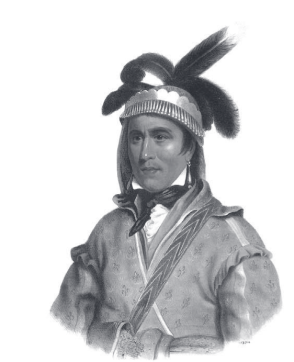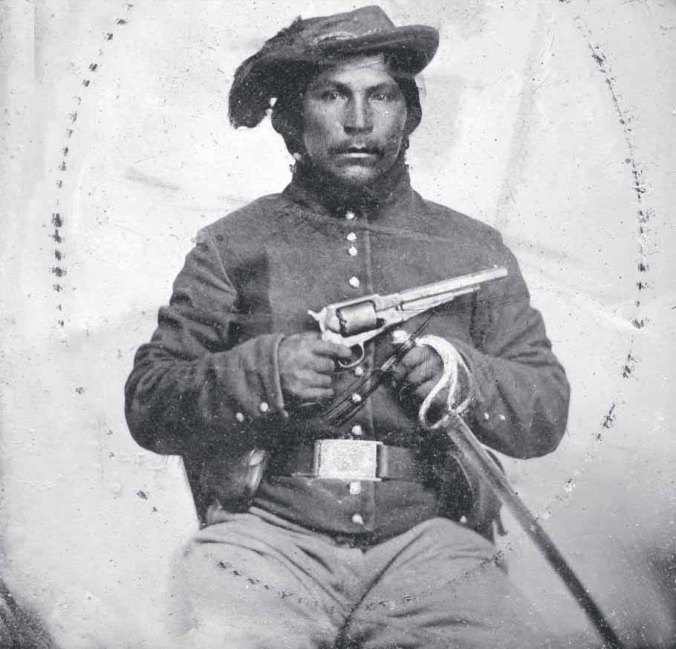If you head to a spot nine miles north of present day Fredonia on Harper Road, just as the road angles west on the southern bank of the Verdigris River, you will come to the location of what was once Fort Row.
Fort Row
In the first year of the Civil War, Confederate Captains John Mathews and his friend Tom Livingston led white Confederate pro-slavers, southern sympathizing Indians, and Missouri Bushwhackers in attacking Free State Humboldt in Allen County, Kansas, just northeast of Wilson County. In September of 1861, Union Forces found Matthews and killed him.
On October 14, 1861, in retaliation, the Missouri Home Guard returned to Humboldt and burned the town to the ground.
To provide some defense of those loyal to the Union, Capt. John R. Row and a force of 80 Union soldiers built Fort Row, on a spot nine miles north of present day Fredonia on Harper Road, just as the road angles west on the southern bank of the Verdigris River.
The Opothleyahola Story

Chief Opotheleyahola
Creek Indians, forced out of Alabama and Georgia in the early 1800s, came on the Trail of Tears to Oklahoma Indian Territory where they settled and established a new hopeful life.
Then came the Civil War.
In the winter of 1861, having received assurances from the Union that Indians loyal to the North would find safety and freedom in Kansas, loyal Creeks fled Oklahoma under the leadership of Opothleyahola. Thousands of Creek braves, women, and children traveled northward to Kansas and hoped for help. Along the way, they were joined by Union loyalists from other tribes as well as hundreds of slaves who had also been promised their freedom in Kansas. Twice the group was attacked by Southerners and again in December at Chustenahal (Bird’s Creek). That battle left the Indians fleeing for their lives in the bitter cold without clothing or food.
It was to tiny Fort Row that Opothleyahola and his beleaguered band fled. The small militia contingent manning the fort was overwhelmed by those seeking food and shelter. Many died that winter.
Opothleyahola settled at the Creek refugee camp near Quenemo and died on March 22, 1863. He was buried beside his daughter near Fort Belmont (two miles west of present-day Buffalo) in Woodson County, Kansas.

First Indian Regiment
The survivors eventually continued on to Woodson and Coffee Counties.
In May of 1862, approximately 1,000 Indian braves marched to Camp Hunter in Humboldt where they were inducted into the Union Army as the First Indian Regiment, both mounted and infantry.
In June of 1862, the First Indian Regiment rode to Baxter Springs accompanied by other Union Regiments. On July 3, the Indians led an attack and surprised a force of approximately four hundred Confederates under Colonel James Clarkson near Locust Grove. The combined forces of Indians and regular Union soldiers eventually captured over one hundred prisoners, including the colonel, along with supply wagons, gunpowder, and horses.
The Union Forces and their Indian allies went as far as Fort Gibson in the Cherokee Nation, near the junction of the Neosho and Arkansas rivers, from which they controlled the road from Fort Scott to Texas.